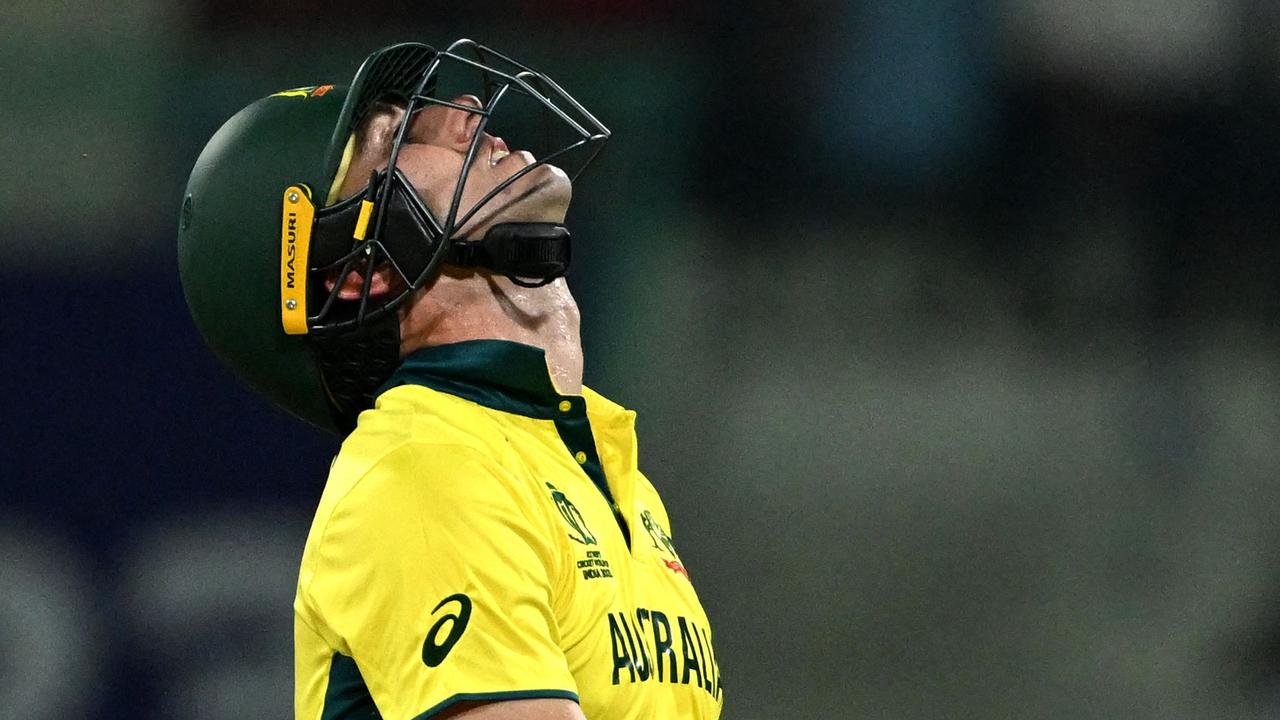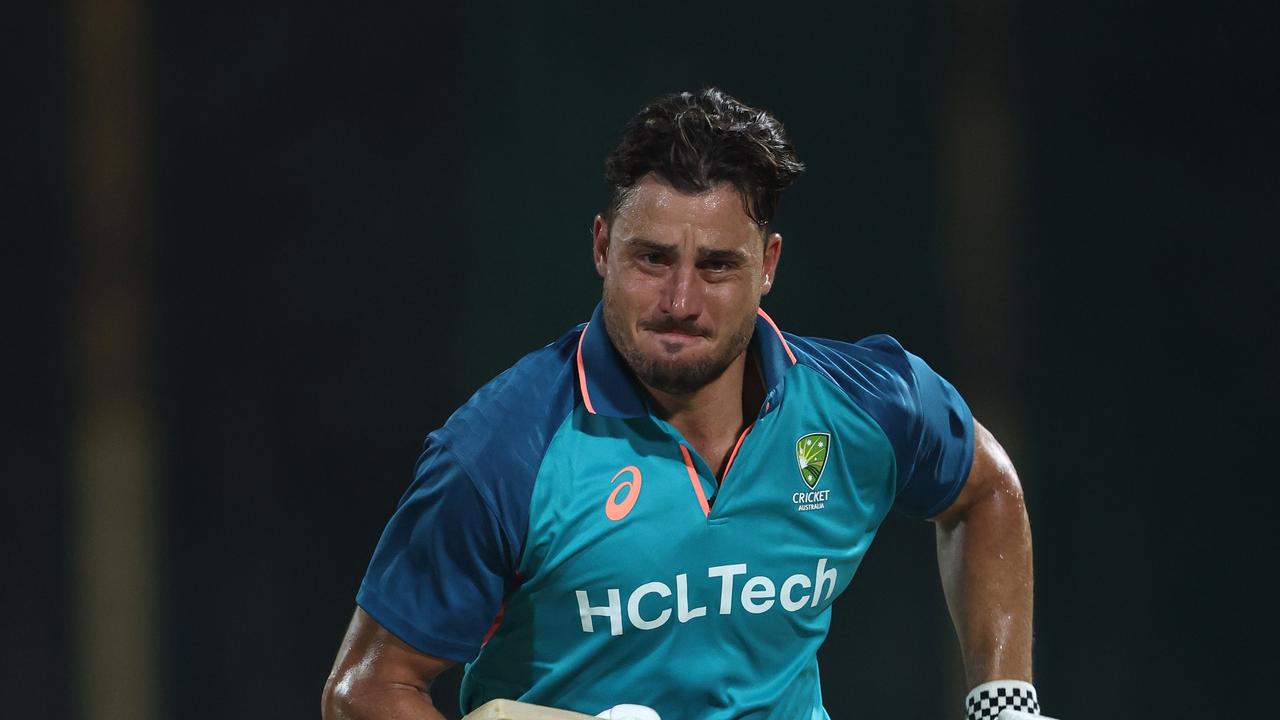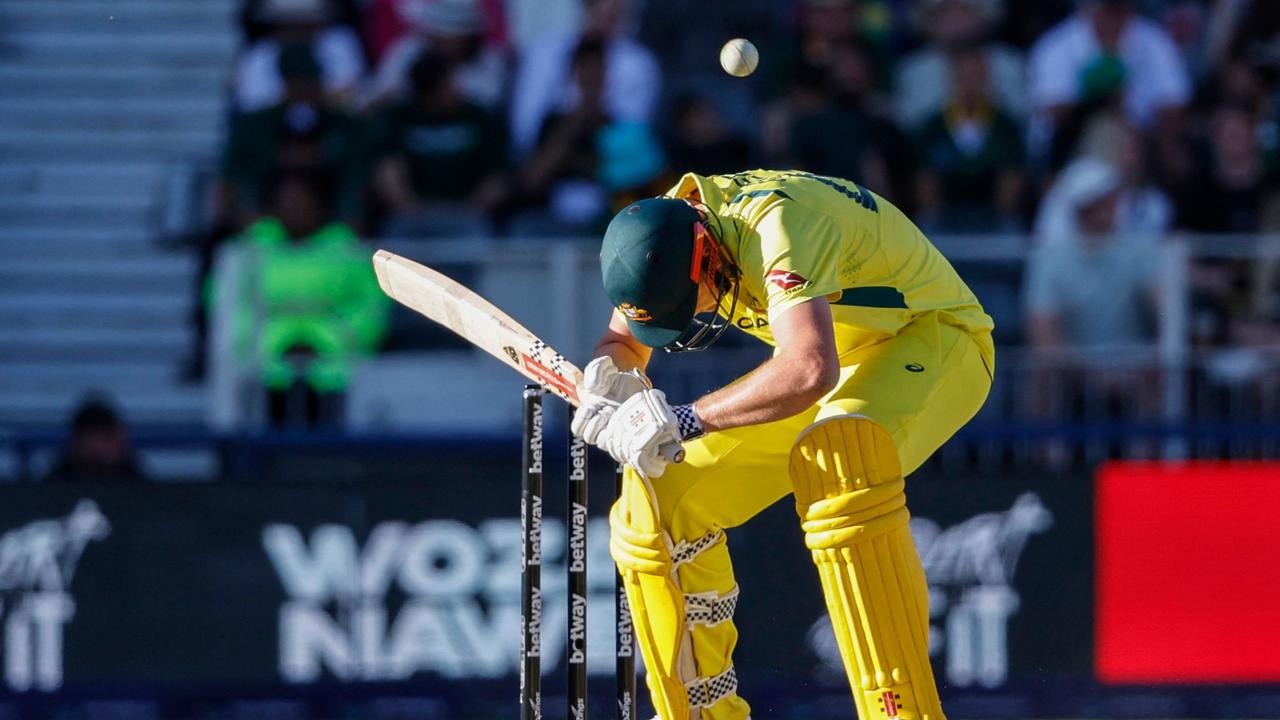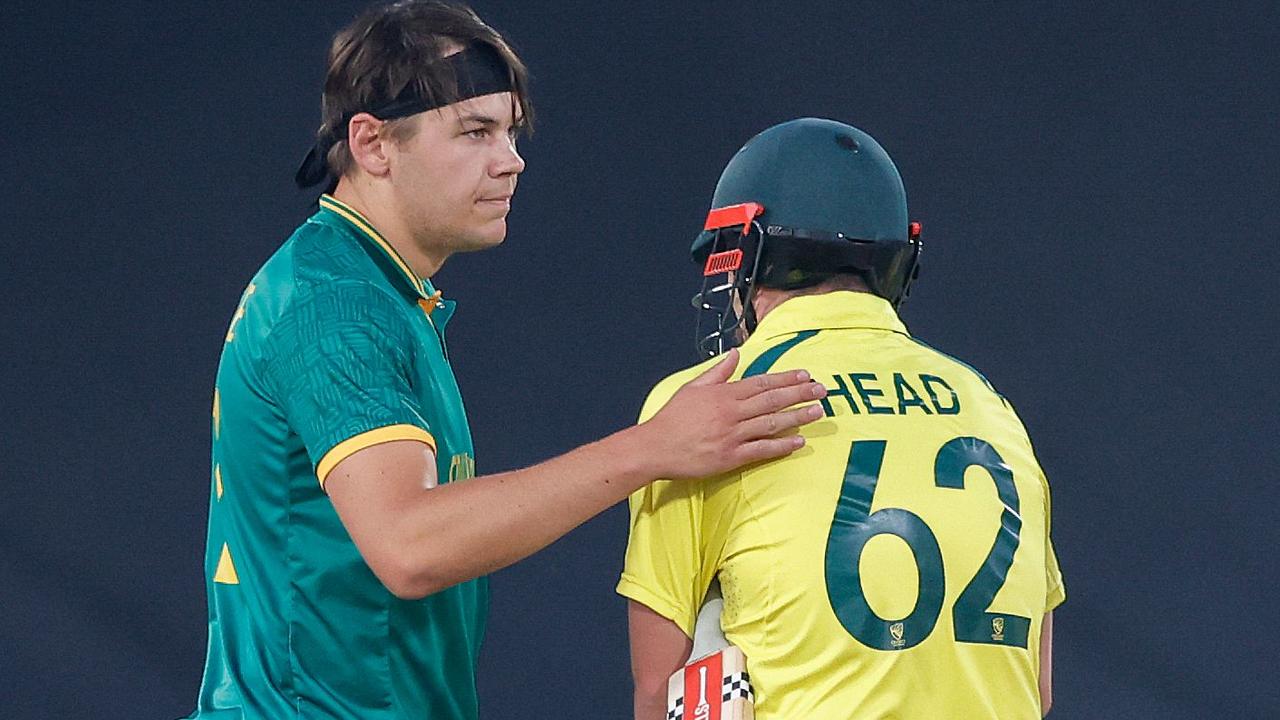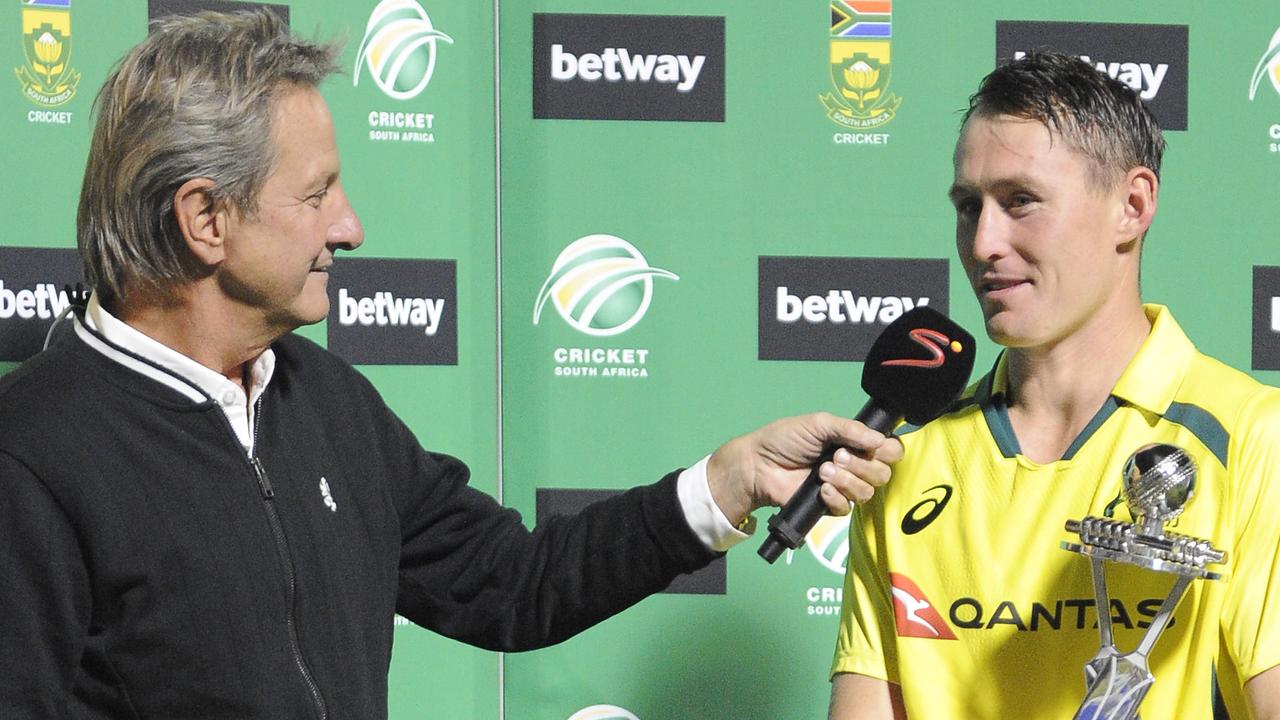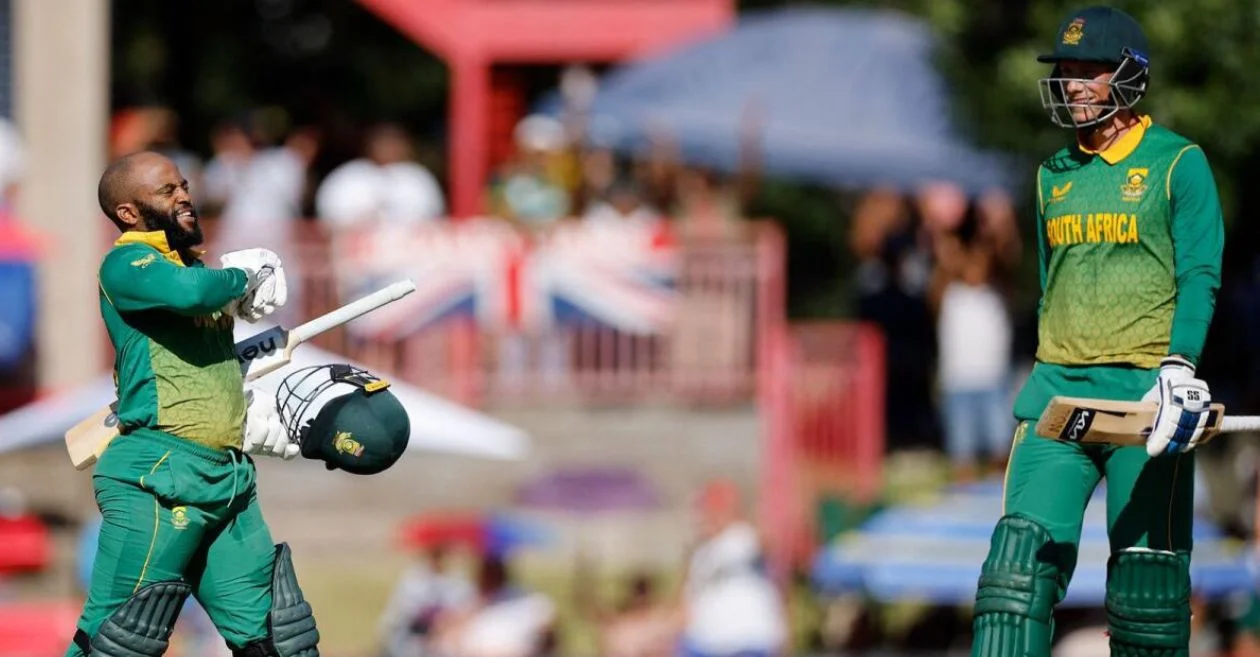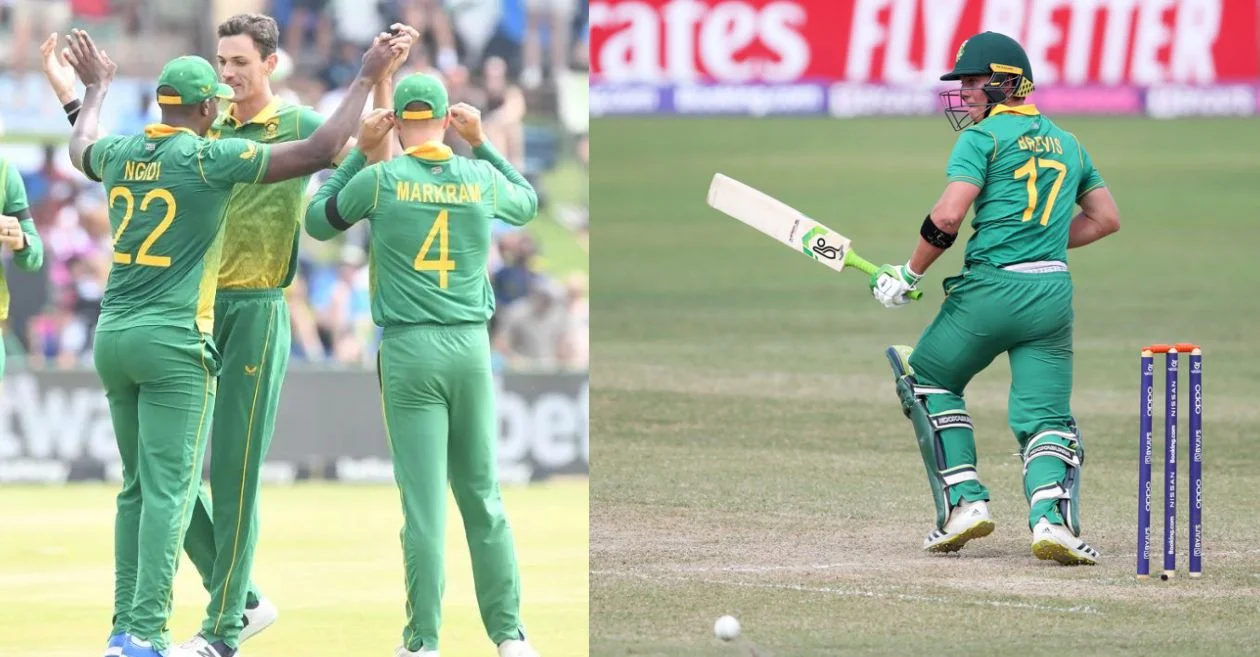Australian captain Pat Cummins concedes he is having trouble reading Indian wickets as he ponders whether to bat or bowl first if given the choice against Sri Lanka on Monday.
Tosses are all Australia has won thus far in the World Cup, with the coin landing favourably for Cummins against both India in Chennai and South Africa at Lucknow’s Ekana Stadium, the same venue that will host the Sri Lanka match.
Against India, the Aussies were undone by the spin of Ravindra Jadeja, Kuldeep Yadav and Ravichandran Ashwin after batting first on a slow, turning track. Australia’s spinners were then nullified by the dew when trying to defend a sub-200 total.
Changing tack against the Proteas, Cummins opted to bowl first on a somewhat bouncier wicket but was hammered by Quinton de Kock and Aiden Markram after failing to make early inroads.
Kagiso Rabada and Lungi Ngidi then had the ball nipping around under lights to inflict Australia’s heaviest-ever World Cup defeat in terms of runs.
The upshot is that Cummins doesn’t have a clear idea about what to do should he get a third straight opportunity to set the tone of the game.
“Yeah, it’s a tricky one. You know, even ODI cricket compared to T20s. Played over you know, half the game in daylight half at night. So it’s a bit different to T20 cricket. I find these wickets sometimes hard to read as well. Like sometimes they look terrible and they play beautifully, and the opposite, sometimes they look flat and they end up spinning so it is tough. You’ve just got to adapt on the fly sometimes,” Cummins said.
But Cummins said the Aussies would continue to judge each pitch on a case-by-case basis rather than nailing themselves to a single plan.
“You’ve still got to assess conditions, India is a big country. Chennai is a long way away from up north in Delhi, or somewhere like that. There are big differences, it’s not a perfect art or a perfect science,” Cummins said.
“Most games are 50-50 whether you bat first or bowl first, the winner is historical, so whatever you do, you’ve got to do it well.”
While Australia will once again withhold confirmation of an XI until the toss on Monday, all indications are that the side will go in unchanged, with Marcus Stoinis and Josh Inglis set to hold their spots after replacing Cameron Green and Alex Carey respectively for the Proteas match. The only fit player in the Australian squad yet to play in the tournament is backup paceman Sean Abbott.
Cummins said the Aussies had been deflated following the South Africa match but the mood had since shifted as they seek to salvage a quickly sinking ship.
“Not ideal at all. Yeah, I think everyone after the last game is a little bit flat. But the last couple days have been really good. Everyone’s kind of rolled up the sleeves and want to try and get to work and make amends. So yeah, the mood of the camp has been fantastic. Everyone’s great. Everyone’s desperate to turn around, I think looking back at 2019 you know India and South Africa are the two teams that we lost to win in the round games. In the last year they’re the two teams that we’ve had the most trouble against. So, you know, the opportunity now is we’ve got some teams we haven’t played for a while, that we’ve had a lot of success against. And be really confident when we go out there,” Cummins said.
“No doubt we haven’t been up to the standard that we’d like to hold. Yeah, we’ve been off the mark and been outplayed both games so you know, when we’re at our best, we’re putting big runs on the board. We’re putting the pressure back onto the opposition … we haven’t been able to pull any of that together so far. So yeah, we know what makes us a really good team. Again, it wasn’t that long ago that we were No. 1 in the world.
“We’ve got to start winning and start winning quick. Every game now is almost like a final you’ve got to win just about all of them.”
Training clue to Aussies’ keeper call
While others tested themselves in the nets, a couple of Australia’s recent fielding culprits worked to ensure a cessation to the side’s series of spills.
As the mosquitoes darted through the air at the Ekana Stadium on Saturday night, Marcus Stoinis and Pat Cummins were among a small group given repeat high catches by Australian fielding coach Andre Borovec.
Stoinis and Cummins had both dropped catches during South Africa’s crushing win over Australia on Thursday night, a result that left the Aussies staring down the barrel of early elimination from the World Cup.
Cummins’ side has bowled only middlingly while its batting has been poor. But the fielding has been arguably the weakest of Australia’s three phases. The Aussies put down five chances against the Proteas, four days after Mitch Marsh fumbled a chance to remove Indian star Virat Kohli cheaply in Chennai.
Even Australia’s ground fielding has been sloppy, with Glenn Maxwell among those below their best in that respect.
Cummins missed a return catch chance with South Africa’s Aiden Markram on one, the Proteas batter going on to make 56 from 44 balls. The fielding woes reached their nadir in the penultimate over of South Africa’s chase, with all-rounder Stoinis letting slip a regulation skied chance from Marco Jansen.
Such was the heavy nature of Australia’s defeat that the catches could not be singularly blamed for the loss, but it is clearly an issue for the Aussie ahead of their game against Sri Lanka on Monday.
While David Warner, Steve Smith and Marnus Labuschagne teed off against net bowlers on Saturday night, Cummins and Stoinis worked on their fielding, along with reserve spinner Tanveer Sangha. At one point Cummins held a high catching pose for several seconds, seemingly modelling correct technique.
Borovec, a long-time Premier Cricket wicketkeeper with Geelong, had earlier spent an extended period working one-on-one with gloveman Josh Inglis. If attention from the fielding coach is anything to go by, then Inglis will hold his spot for the match against Sri Lanka. The man he replaced, Alex Carey, kept on the outfield as Stoinis, Cameron Green and Sean Abbott bowled.
Inglis then got close attention from assistant coach Daniel Vettori as he faced throwdowns and net bowlers. The West Australian also batted ahead of Carey, with net pecking order generally reflective of that for the match ahead.
Inglis dropped Temba Bavuma and was bowled by Kagiso Rabada for five in an inauspicious World Cup debut.
Green, who was also omitted for the game against the Proteas, worked on his batting trigger movement, even appearing to get guidance from Labuschagne amid a cloud of heavy evening fog, not unlike the figurative haze from which Australia is seeking to escape in India.
Veteran quicks Josh Hazlewood and Mitchell Starc were again on light duties, as was spinner Adam Zampa who has battled soreness in the build-up to the tournament.
Smith, Warner, Cummins, coach Andrew McDonald and consultant Andy Flower chatted next to the pitch for 15 minutes as the rest of the group warmed up. Warner is barred from holding a formal leadership position under the terms of his penalty from the Cape Town ball tampering scandal but his presence at the meeting of team leaders highlights the value still placed in his input.
Sri Lanka will be without captain Dasun Shanaka and paceman Matheesha Pathirana – both injured – for Monday’s game. Shanaka has a thigh injury and has been replaced in the squad by Chamika Karunaratne.
